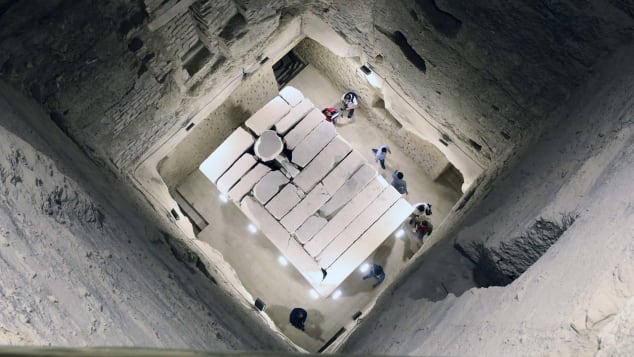King Djoser is known to many for two reasons. First, he saved Egypt from a seven-year famine by rebuilding the Temple of Khnum, the god of the Nile River’s source. The second, which is seen as more important, is his Step Pyramid at Saqqara, the first pyramid built in Egypt under the guidance of famous architect Imhotep.
The tallest structure of its time, the building consists of Djoser’s burial chamber and was built entirely out of stone rather than mud bricks, making it the earliest important stone building in Egypt. Known for commissioning other tombs, temples, and monuments, it is during the reign of Djoser that Egypt witnessed great technological innovation in the use of stone architecture, according to records.
Djoser, also known as Netjerikhet, Tosorthos, and Sesorthos, was the first king of the Third Dynasty of Egypt, whose reign for almost thirty years ensured Egypt was politically and economically stable. Not much is known about his young life but he is believed to have succeeded his father, Khasekhemwy, the last king of the Second Dynasty. Married to Hetephernebti, Djoser’s mother was the queen Nimaathap.
Once made king, he began commissioning his building projects. According to historian Margaret Bunson, Djoser “ruled during an age witnessing advances in civilization on the Nile such as the construction of architectural monuments, agricultural developments, trade, and the rise of the cities.”
Even though cities had grown before Djoser, his reign brought forth more cities and architectural masterpieces which had never been seen before in Egypt. His Step Pyramid at Saqqara, built by skilled Egyptian laborers and craftsmen, is one such project.

Records say that before Djoser assumed the throne, Egyptian kings were buried in mastabas which were rectangular tombs built above underground chambers rising at most 20 feet (6 meters) high. Djoser’s Step Pyramid, however, is “a series of mastabas stacked on top of each other, each level a little smaller than the one beneath, to form the shape of a pyramid,” according to Ancient History Encyclopedia.
The Step Pyramid, which has since undergone major renovations and was reopened to the public this year, was 204 feet (62 meters) high when it was completed. Located outside the royal capital of Memphis, a UNESCO World Heritage Site south of modern Cairo, the Pyramid’s surrounding complex included shrines for royal rituals, a temple, courtyards and living quarters for priests.

Historian Mar Van de Mieroop writes: “Imhotep reproduced in stone what had been previously built of other materials. The facade of the enclosure wall had the same niches as the tombs of mud brick, the columns resembled bundles of reed and papyrus, and stone cyliners at the lintels of doorways represented rolled-up reed screens. Much experimentation was involved, which is especially clear in the construction of the pyramid in the center of the complex. It had several plans with mastaba forms before it became the first Step Pyramid in history, piling six mastaba-like levels on top of one another…The weight of the enormous mass was a challenge to the builders, who placed the stones at an inward incline in order to prevent the monument breaking up.”
But before the Step Pyramid, Djoser had already been hailed for saving lives when a famine broke out in Egypt. For seven years, there was no solution to the problem until Djoser had a dream in which the god Khnum of the Nile River’s source complained to him that his temple on the island of Elephantine was in a poor condition.
Under the guidance of his chief minister and vizier Imhotep, Djoser built a new temple and once it was done, the famine ended. Djoser, as part of measures to ensure his country’s stability, would extend Egypt’s power all the way south to Aswan, and north to Sinai largely through military expeditions.
Defeating the Libyans in battle and annexing part of their lands, his military victories were among some of his greatest accomplishments. Many of these have largely been forgotten but not his final resting place – the Step Pyramid – which is not only a monument to his life and reign but among a flurry of amazing architectural wonders of Egypt that continues to attract tourists.




